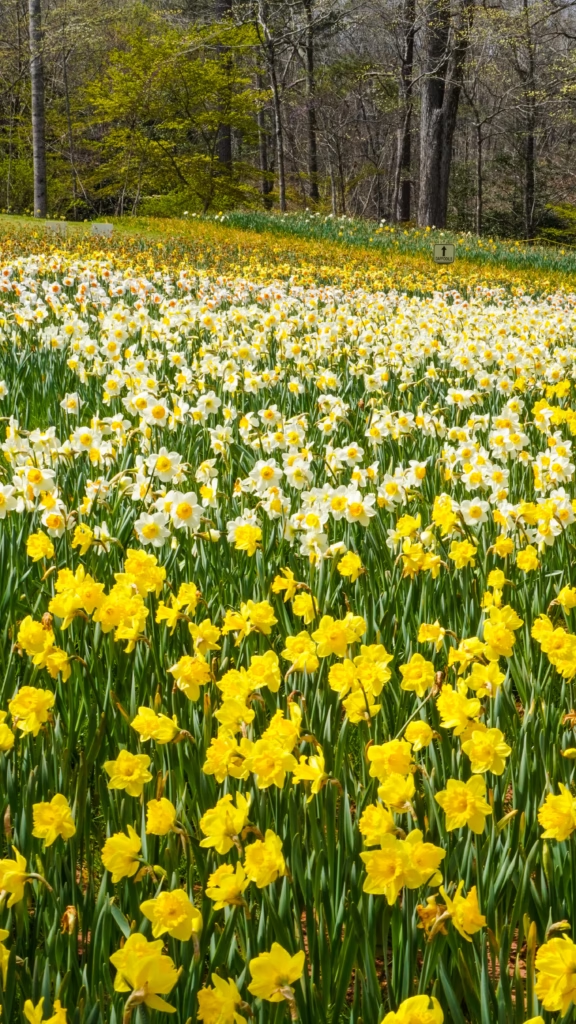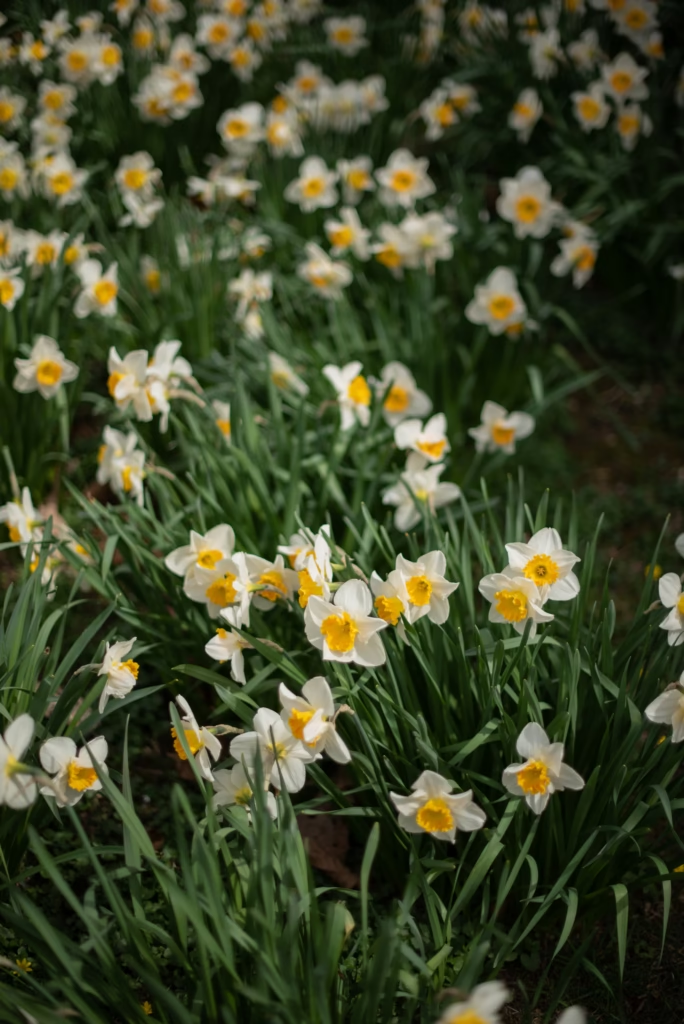
Narcissus, commonly known as daffodils, are cheerful spring-blooming flowers that brighten gardens with their vibrant yellow, white, and orange blooms. These hardy perennials thrive in various climates, making them a popular choice for gardeners. Narcissus grow best in USDA hardiness zones 3 through 8, although some varieties can tolerate zone 9 with proper care. Learning how to plant, grow, and care for Narcissus ensures a stunning spring display year after year.
Planting Narcissus Bulbs
To plant Narcissus, start by selecting a well-drained location that receives full sun or partial shade. Prepare the soil by loosening it to a depth of 12 inches and mixing in compost or organic matter to improve drainage and fertility. Narcissus bulbs prefer slightly acidic to neutral soil with a pH between 6.0 and 7.0.
Plant the bulbs in the fall, approximately 2 to 4 weeks before the ground freezes. Position each bulb with the pointed end facing up and the flat end down. Place the bulbs 6 to 8 inches deep and space them 3 to 6 inches apart. For a natural look, plant them in clusters rather than straight rows. After planting, water the area thoroughly to help settle the soil and encourage root growth before winter.
Growing Narcissus Successfully
Once planted, Narcissus bulbs require minimal care during the growing season. They thrive in full sunlight, so ensure they receive at least 6 hours of light daily. While they tolerate partial shade, too much shade may reduce blooming.
Narcissus bulbs need consistent moisture during their active growth period in spring. Water the plants when rainfall is insufficient, keeping the soil evenly moist but never waterlogged. Adding a layer of mulch around the bulbs helps retain moisture and suppress weeds.
Fertilize the bulbs in early spring when the shoots first appear. Use a balanced, slow-release fertilizer or a bulb-specific formula to promote healthy growth and abundant blooms. Avoid high-nitrogen fertilizers, as they encourage leaf growth at the expense of flowers.
After-Bloom Care
Proper care after flowering keeps Narcissus bulbs healthy for future blooms. Once the flowers fade, remove the spent blooms to prevent seed production, which can weaken the bulbs. However, allow the foliage to remain until it turns yellow and dies back naturally. The leaves collect energy through photosynthesis, which nourishes the bulbs for the next season.
Do not tie or braid the leaves, as this can restrict their ability to absorb sunlight. Instead, leave the foliage undisturbed until it withers. If the area looks untidy, plant perennials or annuals nearby to disguise the fading leaves while maintaining a vibrant garden display.
Dividing and Replanting Narcissus
Over time, Narcissus bulbs multiply and form dense clumps, which may lead to overcrowding and reduced blooming. Dividing the bulbs every 3 to 5 years prevents overcrowding and rejuvenates their growth.
Divide the bulbs in late summer or early fall, after the foliage has completely died back. Start by digging around the clump with a spade or garden fork, taking care not to damage the bulbs. Lift the clump and gently separate the bulbs by hand. Discard any damaged or diseased bulbs, keeping only the healthy ones.
Replant the divided bulbs immediately to ensure they remain hydrated. Follow the same planting depth and spacing guidelines used during initial planting. Water the area well after replanting to help the bulbs establish roots before winter.
Preventing Pests and Diseases
Narcissus plants are relatively pest-resistant, but they may face occasional issues with bulb rot or narcissus flies. To prevent bulb rot, ensure the planting area has excellent drainage and avoid overwatering. For added protection, dust the bulbs with fungicide before planting.
Narcissus flies can damage bulbs by laying eggs inside them. To reduce the risk, remove spent blooms promptly and keep the garden area clean of debris. If an infestation occurs, dig up and dispose of affected bulbs to prevent the spread.
Overwintering Narcissus
Narcissus bulbs are winter-hardy in most climates, so they typically do not need extra protection. In colder regions, applying a layer of mulch after the ground freezes helps insulate the bulbs from extreme temperatures. Remove the mulch in early spring once new shoots begin to emerge.
For gardeners in areas with mild winters, Narcissus bulbs often naturalize and return each year without additional care. If storing bulbs for replanting, keep them in a cool, dry place until fall.
Happy Gardening!
Narcissus flowers bring beauty and cheer to gardens with minimal effort. By planting bulbs in well-drained soil and providing proper care during and after blooming, gardeners can enjoy vibrant displays every spring. Dividing bulbs regularly and addressing any pests or diseases ensures long-lasting success. With the right approach, Narcissus will continue to brighten gardens for years to come.
Please be sure to check out my Gardening Blog Post Page for more tips on all types of gardening. Including Seed Saving, Seed Starting, Orchids, Water Gardening, Coldframe Gardening, Indoor Bulb Gardening, Hydroponics, Container Gardening, Mums, Herbs, African Violets, planting Bulbs, Flower Gardening, Vegetable and Fruit Gardening, Indoor Houseplants of all kinds, Cactus, Succulents, Hanging plants, Deer resistant plants and even Bird, Bee, Butterfly and Hummingbird Gardens!

